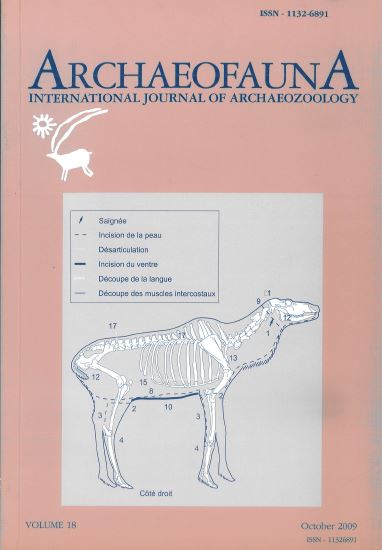Tendencias en el consumo prehispánico tardío de recursos faunísticos: Zooarqueología de C.Pun.39 y Puesto La Esquina 1 (Córdoba, Argentina)
Keywords:
Zooarchaeology, Subsistence, Late Prehispanic Period, Córdoba Hills, ArgentinaAbstract
The results of the zooarchaeological study from two Late Prehispanic Period (300-1000 BP) sites, located on the central Córdoba Hills (Argentina), C.Pun.39 (Valle de Punilla) y Puesto La Esquina 1 (Pampa de Olaen), are presented. The analysis focused on determining and comparing the importance of the various taxa within the various hunting and subsistence practices. Data on these much fragmented assemblages, impairing anatomical and taxonomical identifications, evidence that large mammals, mainly Lama sp. and Ozotoceros beozoarticus, were the main meat suppliers of these late societies although in locally shifting proportions. Big game was complemented with a wide range of small vertebrates, in particular rodents, armadillos, birds and reptiles, all of which exhibited a range of processing marks that bear witness to their consumption.

